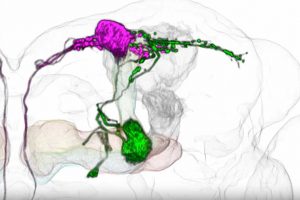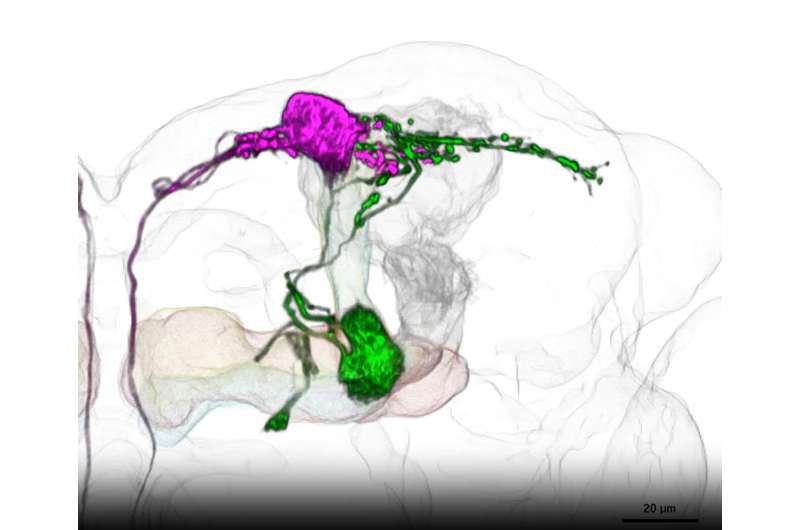Researchers identify neurons that guide flies upwind


New research by Janelia scientists and collaborators at the University of North Carolina at Chapel Hill shows how a cluster of neurons in the fruit fly brain transforms memories about past rewards into actions, helping the fly navigate to find food. The findings are published in the journal eLife.
Like other insects, flies turn into the wind, or upwind, to locate the source of attractive odors. The fly’s olfactory system detects and senses odors carried by the wind, guiding the fly to the reward.
In the fly, a brain region called the mushroom body processes and integrates olfactory information. Multiple compartments in the mushroom body act in parallel to assign positive or negative values to an odor stimulus, but how these signals are translated into motor actions is unknown.
The new research shows reward memories formed in different compartments of the mushroom body elicit distinct behaviors, with only some driving the fly’s upwind movement. The study identifies a cluster of neurons—Upwind Neurons or UpWiNs—that integrate inhibitory and excitatory inputs from these compartments, causing the fly to turn and move into the wind.
The new research provides insight into how learned positive and negative values are gradually transformed into concrete memory-driven actions. The UpWiNs also send excitatory signals to dopaminergic neurons for higher-order learning, according to the researchers.
These findings help to explain how parallel dopaminergic neurons and memory subsystems interact to guide memory-based actions and learning at the level of individual neural circuits.
More information:
Yoshinori Aso et al, Neural circuit mechanisms for transforming learned olfactory valences into wind-oriented movement, eLife (2023). DOI: 10.7554/eLife.85756
Daichi Yamada et al, Hierarchical architecture of dopaminergic circuits enables second-order conditioning in Drosophila, eLife (2023). DOI: 10.7554/eLife.79042
Journal information:
eLife
Source: Read Full Article